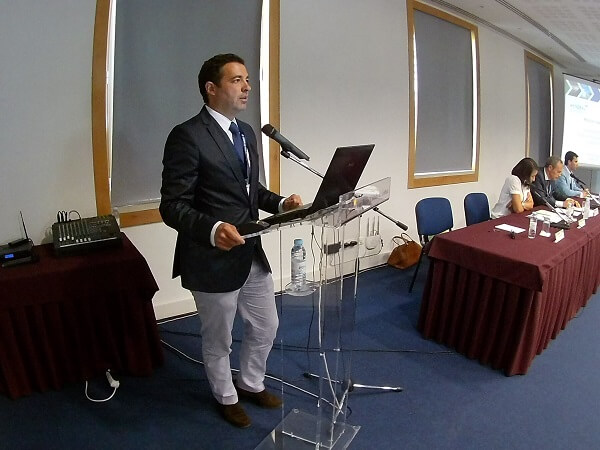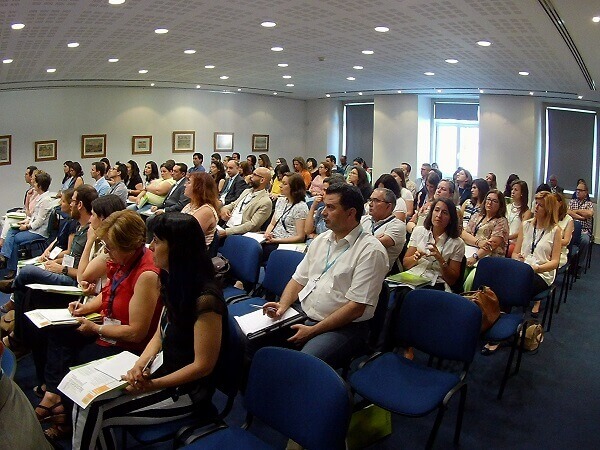ECODEAL participates and sponsors hazardous and hospital waste seminar
On 28/6/2016, the seminar on Hazardous and Hospital Waste promoted by the Portuguese Association of Environmental Technology Companies (APEMETA) was held in Campo Grande. ECODEAL sponsored the event and invited Manuel Simões, Director General, to speak at the seminar.
During the seminar several causes were assigned, both by the Portuguese Environmental Institute (APA) and by the General Inspectorate of Agriculture, Sea, Environment and Territorial Planning (IGAMAOT), to the “disappearance” of hazardous industrial waste. The truth is that the hazardous waste market has been decreasing both for good and bad reasons.
While on the subject of the reuse and use of cleaner technologies, we have reason to be proud of the management that Portuguese industries have been following in terms of hazardous waste management. What concerns us are the bad reasons. Manuel Simões stressed the importance of being aware of all declassification at the source, either due to ignorance in classifying correctly or in an attempt to reduce costs.
In his presentation, Manuel Simões analysed the report recently published by APA, available on their website.
This is a detailed report on the production and disposal of hazardous waste produced in 2014.
According to the report, 478,373 tons of industrial hazardous waste were produced in 2014. The same report identifies 54,917 tons for export, so it is legitimate to say that 423,456 tons of hazardous waste were treated in Portugal.
If we look at the amount of the CIRVER observatory on the quantities handled by the CIRVER in 2014 (270,878 tons), we find that the destinations of 152,578 tons of waste still need to be identified.
It is interesting is to see that the same report identifies the amount of 203,252 tons of hazardous waste managed for temporary storage operators (D15/R13), without identifying and analysing these operators due to the large quantity of operators. It seems clear to us that it is urgent to analyse and identify this large amount of operators...
And it is necessary to identify those operators because if these wastes are being sent to non-hazardous waste landfills, they can be creating new environmental liabilities...
In fact, a landfill for non-hazardous waste is different from a hazardous waste landfill. First of all, the waterproofing of the landfill must be guaranteed in accordance with different criteria, as seen in DL 183/2009.
A non-hazardous waste landfill does not have adequate waterproofing for hazardous industrial waste.
The filling operations of non-hazardous waste landfills are not adapted for operations involving hazardous industrial waste. Also, the safety conditions of non-hazardous waste landfills do not provide for the incompatibility of waste, in particular between acid and basic residues, oxidising waste and fuels, among others.
When depositing hazardous industrial waste, even if solidified, in a non-hazardous waste landfill, the leaching behaviour can change negatively over time due to degradation of the solidification, namely through the influence of the remaining waste deposited, of leachate with hazardous properties that can be incompatible with other waste present, or even other leachate and gas.
We will have negative consequences for the environment and public health in the medium, long term.
ECODEAL left several suggestions that may make it possible to control industrial waste, including hazardous waste:
1) Creation of a database and characterisation report of the various types of industrial hazardous waste managers, as made for the CIRVER;
2) Monitoring of the transfer of hazardous industrial waste among licensed operators;
3) Analysis of the results of the PRTR (Pollutant Release and Transfer Register) to determine changes in the production of hazardous industrial waste in the different facilities, identifying deviations in the production of hazardous industrial waste;
4) Awareness-raising/training of supervision authorities to identify potential hazardous industrial waste and potential incorrect classifications of waste at source;
5) Requirement of analytical results or demonstration studies for waste with a “mirror entry” EWL code.
ECODEAL is available to clear up any doubts and help where necessary. We enjoyed participating in this workshop where we could enlighten those present and provide them with some suggestions to control this market.
Watch some pictures from the seminar:

Related articles
External Audit of Monitoring QES | ECODEAL






